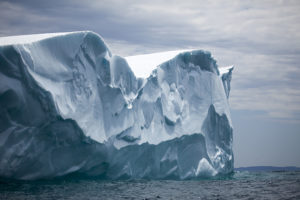 The extent of the cover of sea ice at both poles keeps reaching new records. According to NASA, the Arctic sea ice reached a record low wintertime extent on March 7, 2017. It was the same situation on the other side of the world when Antarctic sea ice levels were documented to reach its lowest extent recorded since satellites began to measure these parameters in 1979. What is even more troubling is that what remains is even thinner than before. Sea ice plays many roles in the health of our planet. When sea ice melts, nutrients are released into the water stimulating the growth of phytoplankton in the summer. These microorganisms play a role as the base of the food web upon which everything else must feed. When too much sea ice melts and disappears, we lose a large white reflective base that would usually send light back into space. With larger expanses of dark open water, more heat is absorbed and the overall temperature of the planet increases.
The extent of the cover of sea ice at both poles keeps reaching new records. According to NASA, the Arctic sea ice reached a record low wintertime extent on March 7, 2017. It was the same situation on the other side of the world when Antarctic sea ice levels were documented to reach its lowest extent recorded since satellites began to measure these parameters in 1979. What is even more troubling is that what remains is even thinner than before. Sea ice plays many roles in the health of our planet. When sea ice melts, nutrients are released into the water stimulating the growth of phytoplankton in the summer. These microorganisms play a role as the base of the food web upon which everything else must feed. When too much sea ice melts and disappears, we lose a large white reflective base that would usually send light back into space. With larger expanses of dark open water, more heat is absorbed and the overall temperature of the planet increases.
A Place of Great Change
The Arctic is transforming more rapidly than anywhere else on our planet. Temperatures there are rising at twice the rate seen elsewhere. Many scientists agree that the Arctic could soon be ice-free. Extreme changes are in motion for the people of the North. Permafrost melting, sea level rise, erosion and an increase in stormy weather pose risks for a society that has lived in balance with nature. With the Arctic food web shifting from loss of sea ice, traditional hunts are disrupted, and the tenuous balance of food security is lost.
With the Arctic becoming more navigable and accessible, resource speculation is on the rise. Oil and gas and shipping industries are jockeying into position to snag new routes and drilling rights in the open water. These activities will indelibly change the complexion of the Arctic and bring new risks to an otherwise pristine sanctuary.
